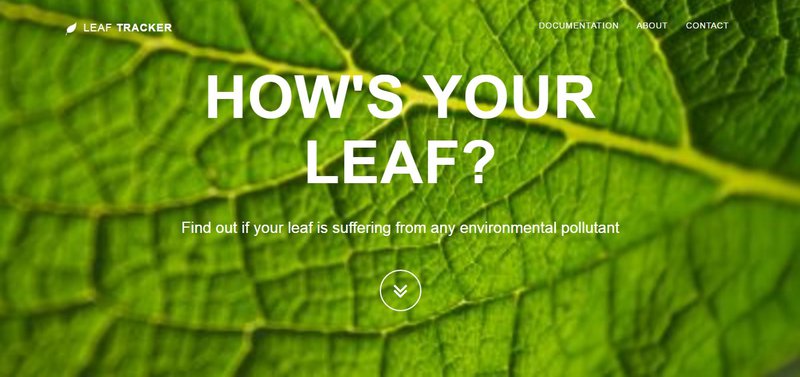The Transcenders | Live Smart
Awards & Nominations
The Transcenders has received the following awards and nominations. Way to go!
The Challenge | Live Smart
Leaf Tracker
Leaf Tracker is a crowdsourcing platform which encourages citizens to actively participate in both monitoring and addressing local environmental challenges.

What happens when four students passionate of coding, web design and chemistry transcend their fields of study and share a vision on Earth Science topics? A Shazam-like application emerges, but instead of sound it analyses crowd sourced data on pollution to raise awareness on environmental issues.
About
Leaf Tracker is a crowdsourcing platform which encourages citizens to actively participate in both monitoring and addressing local environmental challenges.
Using leaves as biomonitoring tools and foliar symptoms as pollution indicators, Leaf Tracker compares existing database resources with on-site reports and isolates geographical areas with potential unidentified polluting sources. Moreover, it mediates the relationship between its users and local authorities, making environmental bulletins more accessible and local climate issues more approachable at the community level.
Goal
The platform’s main goal is to raise awareness on climate change concerns, provide interactive tools for a new generation of environmentally conscious citizens and mediate the connection between communities and local authorities.
Scientific background
Leaves are some of nature’s most various biosensors in terms of shape, size and texture. They have the capacity to accumulate different pollutants and develop specific foliar symptoms in response to them. For example:
- Fluorine (F) accumulation from agrichemicals such as herbicides and crop regulators causes the appearance of yellow spots on the leaf’s surface, foliar necrosis, size shrinkage or drying symptoms;
- Sulfur dioxide (SO2) generated as a byproduct of fossil fuel degradation accelerates the rhythm of acid rain formation and determines bleaching phenomena of the foliar apparatus;
- Nitrates / Nitrites (NOx) which act on local level as emissions of the Diesel motor usage contribute as well in acid rain formation; they can cause the appearance of wax-like foliar surfaces, bleaching and even leaf detachments;
- Ozone (O3) precursors which emerge during fossil fuel combustion cause the appearance of black and white spots on the leaf’s surface, in some cases even complete bleaching;
- Calcium (Ca) pollution, frequently encountered on construction and mining sites, is associated with the appearance of unusual foliar wrinkling, bleaching and leaf detachment.
Technical background
Foliar symptoms are associated with their chemical causes, users complete a report and submit it of the platform. Data (including pictures) gets uploaded into a database via a REST API, various inputs are linked to their respective causes using machine learning algorithms.
At its current stage, the platform has three functional sections:
- the Home section, where you can submit your report/ photos of leaves;
- the Documentation section, where you can read more about the types of pollutants that have visual effects on leaves;
- the About section.
Future development stages include:
- implementation of machine learning/ visual recognition data analysis;
- overlay open sourced data with NASA/ ESA satellite data;
Thinking about the future
The friendly environment of the platform will grow organically dependent on the number of its users. These will receive notifications as well as updates on the correctly identified pollution problems they took part in. A possible collaboration with local authorities has not escaped our attention.
Resources
BOLEA V., CHIRILĂ D. (2006),Valorificarea diagnozei foliare
NOVAK K., SKELLY JM., SCHAUB M., KRAUCHI N., HUG C., LANDOLT W., BLEUER P. (2013), Ozone air pollution and foliar injury development on native plants of Switzerland, Environ Pollut. 2003;125(1):41-52
ŞANDOR C.G. (2012), Resurse de apă din Depresiunea Bârsei, valorificare şi implicaţii în peisaj. Teză de doctorat
***(1989) Biologic Markers of Air-Pollution Stress and Damage in Forests, Committee on Biologic Markers of Air-Pollution Damage in Trees, Commission on Life Sciences, Division on Earth and Life Studies, National Research Council, Washington, D.C.
SpaceApps is a NASA incubator innovation program.